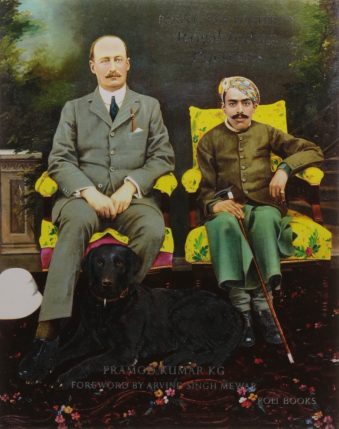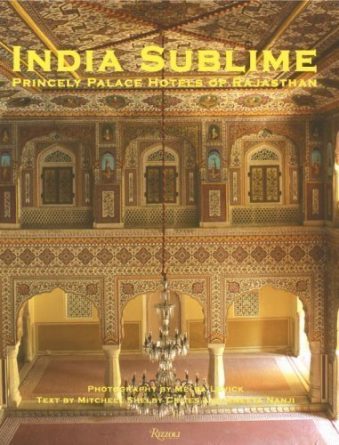- Empty cart.
- Continue Shopping
INDIA A CELEBRATION OF INDEPENDENCE 1947 TO 1997, HARDCOVER , 1997
₹1,000.00
by Victor Anant (Author), Anne D’Harnoncourt (Author), Henri Cartier-Bresson (Photographer), Mitch Epstein (Photographer), Kanu Gandhi (Photographer), Sunil Janah (Photographer), Raghu Rai (Photographer), Sebastiao Salgado (Photographer)
Publisher : Aperture (30 June 1997)
Language : English
Hardcover : 228 pages
ISBN-10 : 9780893816957
ISBN-13 : 978-0893816957
9 in stock
This book brings together the work of more than twenty photographers who have spent a significant time in the country. Reveals not only the face of India, but visions of the country from within.
Photographs by Henri Cartier-Bresson, Mitch Epstein, Kanu Ghandi, Sunil Janah, Raghu Rai, Sebastio Salgado, and Others. Essay by Victor Anant.
The book explores what Victor Anant, in his stirring essay, refers to as an India that “lives outside time.
India
A Celebration of Independence, 1947 to 1997
Essay by Victor Anant
Afterword by Anne D’Harnoncourt and Michael E. Hoffman
The year 1997 marks the fiftieth anniversary of India’s independence from Great Britain. In commemoration of this event, Aperture presents India: A Celebration of Independence, 1947-1997, which accompanies a major touring exhibition of the same title. Together, the exhibition and this book constitute an unprecedented gathering of the most significant photographs to be made in India over the past five decades– the culmination of a quest to capture the country’s essence visually, and to depict the uniquely deep and complex love that binds both native-born and foreign artist to India for a lifetime. The book explores what author Victor Anant, in his stirring essay, refers to as an India that “lives outside time, in a kind of space that has never been usurped by alien forces”: a nation that has always had a fiercely independent spirit, an identity that is both steeped in tradition and constantly evolving.
India: A Celebration of Independence features exquisite black-and-white duotone as well as four-color reproductions of the work of twenty-three photographers. Opening with the work of the great Indian photojournalist Sunil Janah, who witnessed and chronicled the fitful birth of India’s democracy, the book also features powerful images by Henri Cartier-Bresson, taken during his numerous visits to India, a country he calls “a haven of the heart.” Also included are a number of breathtaking images by Sebastião Salgado, who has produced indelible photographic tableaux of the Indian working communities. Embracing many regions and people from all walks of life, the compelling photographs by Raghu Rai represent a convergence of the traditional with the modern, and exhibit his love and profound understanding of his native India.
Among the most prominent younger Indian photographers is Dayanita Singh, whose intimate black-and-white images reveal a keen awareness of a changing cultural identity in her country. Pamela Singh’s work compares some of the traditional and new roles available now to women in India. Mary Ellen Mark’s portraits of Indian children and street scenes, in both color and black-and-white, provide another inside look at the country’s people. Robert Nickelsberg, a resident of New Delhi, focuses on India’s recent social and political conflicts, while Charles Lindsay’s black-and-white panoramas represent a stiller, more poetic side of the nation’s character. We travel with Mitch Epstein into the courtyards of New Delhi and Jaipur, and to the meditative garden of poet Rabindranath Tagore with Rosalind Solomon. Thomas L. Kelly guides us to the stunning Rashtrapati Bhavan, ablaze with lights for Republic of India Day. William Gedney’s black-and-white photographs capture the unique rhythm of the Indian street. Steve McCurry has lived and worked for many years in India, developing a personal and comprehensive body of color work, which is represented here.
Both Alex Webb and Ketaki Sheth examine icons of India’s so-called “Bollywood,” countered by Sanjeev Saith’s color images, which discover quiet moments of contemplation. Also featured is a study of Rajasthan’s “Children’s Parliament” by Italian photographer Dario Mitidieri. Finally, the elegant black-and-white images of Swapan Parekh provide an echo of the past as it meets with the present. Altogether, the work of this “new generation” of photographers attests that India– a country virtually defined by its many traditions– is today undergoing an epoch of profound change.
The compendium of images in India: A Celebration of Independence, 1947 to 1997 provides an invaluable and unprecedented photographic record of this country and the changes it has undergone over the past half century. Victor Anant’s opening essay traces the events that led to Independence, and the ensuing political, social, and personal ramifications. The book also contains an informative chronology of India’s past hundred years, as well as an Afterword by Anne d’Harnoncourt, the George D. Widener Director of the Philadelphia Museum of Art, and Michael E. Hoffman, Aperture’s Executive Director, and Founding Curator of the Philadelphia Museum’s Alfred Stieglitz Center. Powerful and poetic texts excerpted from the work of such figures as Rabindranath Tagore, Mahatma Gandhi, Jawaharlal Nehru, Saloni Narang, Kamala Das, and others provide a voice of India to complement this extraordinary compilation of photographs.
Victor Anant, born in Kerala, South India, is the author of numerous novels and poems, as well as journalistic reportage. When he was a child, his family moved to Bombay, where he was jailed for anti-British activities while still in his teens. He left Bombay after Independence for London, where his writings were published in the New Statesman, and he began work for Picture Post– the first Indian to be a staff writer on Fleet Street. Over the course of his career, he has worked for many journals, institutions, and publications in the U.K., and elsewhere, including the Daily Telegraph, the Guardian, UNESCO, the United Nations, and the International Press Institute. Anant’s most recent book is Sacred Crow (Penguin India, 1996). He divides his time between Spain, Karachi, and India.
Aperture Foundation publishes a periodical, books, and portfolios of fine photography to communicate with serious photographers and creative people everywhere. A complete catalog is available upon request. Address: 20 East 23rd Street, New York, NY 10010. Phone: (212) 598-4205. Fax: (212) 598-4015.
Other Aperture books available from your bookseller or directly from Aperture:
Grand Trunk Road. Photographs and text by Raghubir Singh. Historical essay by Jean Deloche.
Journey to Enlightenment. Photographs and text by Matthieu Ricard. Foreword by His Holiness the Dalai Lama.
Tibet: The Sacred Realm, Photographs 1880-1950. Preface by His Holiness the Dalai Lama. Chronicle by Lobsang P. Lhalungpa.
Health, Healing, and Beyond: The Living Tradition of Krishnamacharya. Text by T.K.V. Desikachar and R. H. Cravens.
About the Author
Victor Anant, born in Kerala, South India, is the author of numerous novels and poems, as well as journalistic reportage. When he was a child, his family moved to Bombay, where he was jailed for anti-British activities while still in his teens. He left Bombay after Independence for London, where his writings were published in the New Statesman, and he began work for Picture Post– the first Indian to be a staff writer on Fleet Street. Over the course of his career, he has worked for many journals, institutions, and publications in the U.K., and elsewhere, including the Daily Telegraph, the Guardian, UNESCO, the United Nations, and the International Press Institute. Anant’s most recent book is Sacred Crow (Penguin India, 1996). He divides his time between Spain, Karachi, and India.











